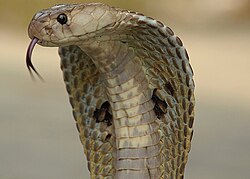
| Part of a series on |
| Economics |
|---|
 |
| |
In economics, a perverse incentive is an incentive structure with undesirable results, particularly one where those effects are unexpected and contrary to the intentions of its designers. [1]
Contents
- Examples of perverse incentives
- Electoral systems
- Pest control campaigns
- Community safety and harm reduction
- Environmental and wildlife protection
- Historic preservation schemes
- Healthcare cost control
- Humanitarian and welfare policies
- Promotional schemes and public relations
- Returns for effort
- In literature
- Historicity of the cobra anecdote
- See also
- References
- Further reading
The results of a perverse incentive scheme are also sometimes called cobra effects, where people are incentivized to make a problem worse. This name was coined by economist Horst Siebert in 2001 based on a historically dubious anecdote taken from the British Raj. [2] [3] According to the story, the British government, concerned about the number of venomous cobras in Delhi, offered a bounty for every dead cobra. Initially, this was a successful strategy; large numbers of snakes were killed for the reward. Eventually, however, people began to breed cobras for the income. When the government became aware of this, the reward program was scrapped, and the cobra breeders set their snakes free, leading to an overall increase in the wild cobra population. [4] [5]
Perverse incentives arise in various fields such as electoral systems, pest eradication campaigns, community safety and harm reduction, environmental and wildlife protection, historical preservation plans, healthcare cost control, humanitarian and welfare policies, promotional plans and publicity. These incentives are often designed to achieve short-term goals, but in the long run, they lead to bigger problems or undermine the original objectives.